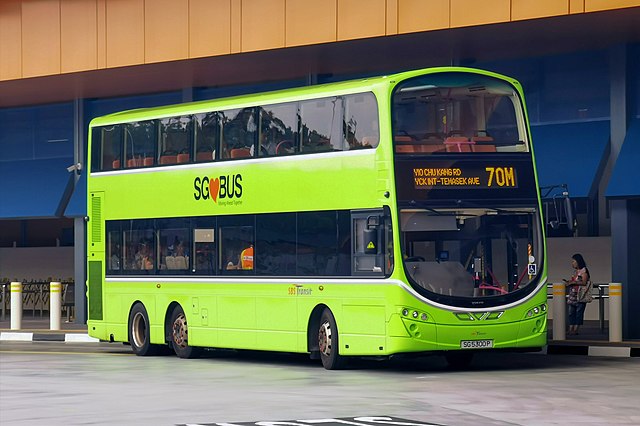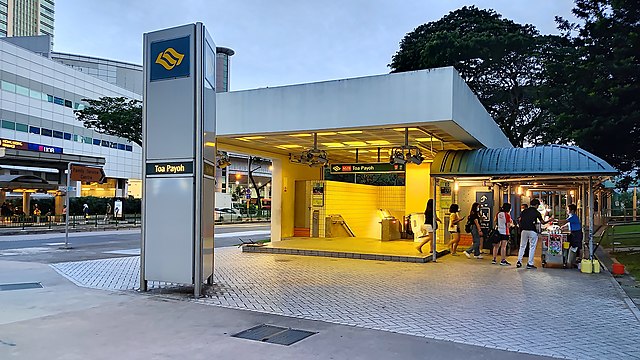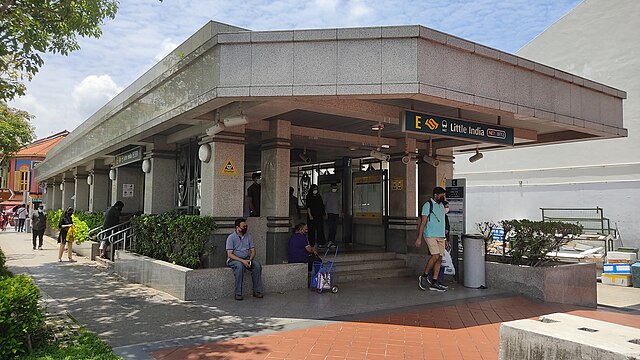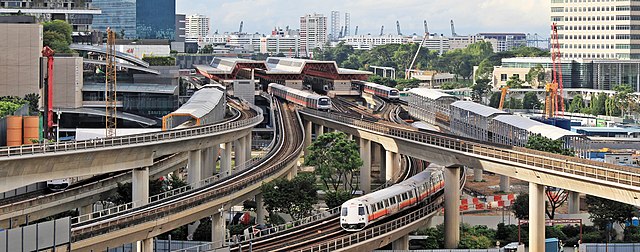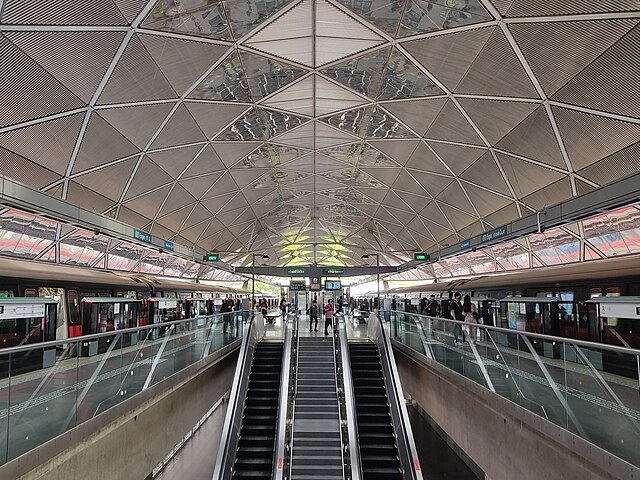Transportation in Singapore is predominantly land-based, with a comprehensive network of roads making many parts of the city-state, including islands such as Sentosa and Jurong Island, accessible. The road network is complemented by a robust rail system consisting of the Mass Rapid Transit (MRT) and the Light Rail Transit (LRT), which cover the length and width of Singapore and serve a few neighbourhoods respectively. The main island of Singapore is also connected to other islands via ferryboat services. Furthermore, the city-state maintains strong international connections through two bridges linking it to Malaysia – the Causeway and the Second Link – and the Singapore Changi Airport, a major aviation hub in Asia.
Punggol Station, northern terminus of the NEL, one of Singapore's MRT lines.
New public buses in Singapore are painted lush green for easier identification of public buses
A Toyota Prius taxi operated by ComfortDelgro
A section of the Ayer Rajah Expressway
Mass Rapid Transit (Singapore)
The Mass Rapid Transit system, locally known by the initialism MRT, is a rapid transit system in Singapore and the island country's principal mode of railway transportation. The system commenced operations in November 1987 after two decades of planning with an initial 6 km (3.7 mi) stretch consisting of five stations. The network has since grown to span the length and breadth of the country's main island – with the exception of the forested core and the rural northwestern region – in accordance with Singapore's aim of developing a comprehensive rail network as the backbone of the country's public transportation system, averaging a daily ridership of 3.4 million in 2019.
Image: NS19 Toa Payoh MRT Exit D 20220712 192031 (cropped 16 to 9)
Image: NE7 Little India MRT Exit E 20210904 131526
Image: Jurong East MRT station 230622
Image: CG1 Expo EWL MRT Platforms


